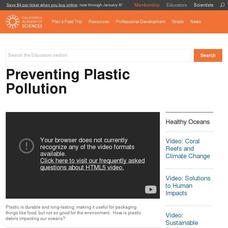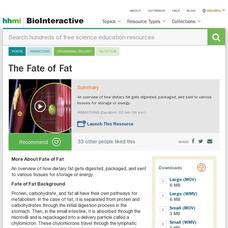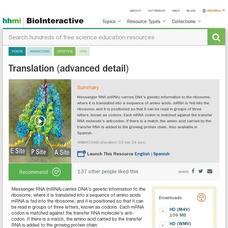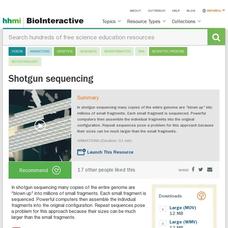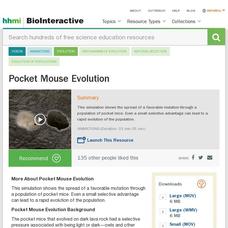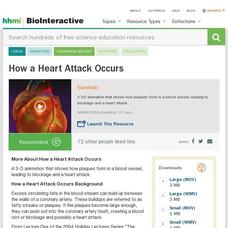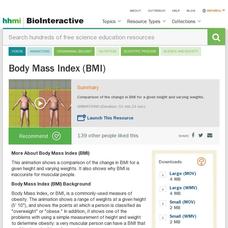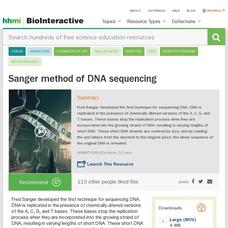California Academy of Science
Preventing Plastic Pollution
While plastics don't biodegrade, they do photodegrade, creating issues in Earth's oceans. The final video in the Healthy Oceans series explains why plastic in oceans causes so many issues. the narrator explains the impact of plastic...
California Academy of Science
Solutions to Human Impacts
The phrase think globally, act locally inspires scholars to address pollution. After learning about invasive species, nutrient pollution, and dead zones, discussion questions help scholars link the concepts. They then apply knowledge of...
Nature League
Nature + Engineering
Viewers observe many nature-inspired examples in technology, household items, and health care with the final video in a five-part series on Evolution and Speciation. The video focuses on human engineers inspired by earth's wonders.
Nature League
One Fish, Two Fish, Red Fish, New Fish - De-Natured
Sometimes it seems like high-level journal articles speak a different language. The third video in the five-part series on Evolution and Speciation breaks down one recent article from a science journal. It explains what the researchers...
Nature League
Preserving Montana's State Fish - Field Trip
Many people know in cases with a lot of in-breeding, the species becomes weak and less likely to survive long term. Now learn about how out-breeding also leads to the same result. The second of five videos on Evolution and Speciation...
TED-Ed
The Journey to Pluto, the Farthest World Ever Explored
In 2006, scientists launched a mission to explore Pluto and beyond. In 2015, after a challenge just days before approaching Pluto, New Horizons completed its first objective. The mission continues, and detailed reports are set to begin...
Crash Course
Thermodynamics: Crash Course History of Science #26
Scientists discovered the first law of thermodynamics 25 years after the second law of thermodynamics. The seemingly obvious discoveries sometimes confuse scientists while more complex challenges encourage extra study—and take more time...
Crash Course
Micro-Biology: Crash Course History of Science #24
Robert Koch and his team of scientists identified the germs that cause diphtheria, typhoid, pneumonia, gonorrhea, meningitis, whooping cough, tetanus, plague, leprosy, syphilis, and more—that's some important work! Over a period of 100...
Crash Course
Eugenics and Francis Galton: Crash Course History of Science #23
Viewers l earn about the rise and fall of social Darwinism, eugenics, and flawed science during the 23rd episode of the Crash Course History of Science video series. The video covers if awesomeness is hereditary, the invention of birth...
Crash Course
The Industrial Revolution: Crash Course History of Science #21
The Industrial Revolution changed transportation systems, social systems, and economies. Episode 21 of Crash Course History of Science examines the Industrial Revolution. From the invention and improvements to the steam engine to the...
Howard Hughes Medical Institute
The Fate of Fat
Humans need fat for energy and nutrition, but how much is too much? A short animation shows the pathway of fat as it enters the body, breaks down through digestion, and travels for use or storage. Teaching tips offer multiple ways to...
Howard Hughes Medical Institute
Translation (Advanced Detail)
Who said staying predictable is a bad thing? Translation follows a predictable four-step process. Scholars view a summary of each step with a breakdown of every detail, then examine different functions, highlighted with different colors,...
Howard Hughes Medical Institute
Sickle Cell Anemia
The most common blood disorder in the United States, sickle cell impacts more than 70,000 Americans. Understanding the genetic coding that leads to this disease might one day help scientists prevent it altogether. Using a promising...
Howard Hughes Medical Institute
Shotgun Sequencing
Finally, something that is better when it's broken! Computers make sequencing short pieces of genome an easy task, yet they struggle with long sequences. Learn about one method for sequencing genomes by breaking it into smaller pieces...
Crash Course
Darwin and Natural Selection: Crash Course History of Science #22
Charles Darwin studied many species, but he also hindered their continued study by eating his specimens. Like many sailors, he enjoyed the taste of the Galapagos tortoise so much for many years that no ship made it all the way back to...
Howard Hughes Medical Institute
Pocket Mouse Evolution
G.H. Hardy and Wilhelm Weinberg created a mathematical formula to predict genotype frequencies. Observe a simulation of the Hardy-Weinberg equation using pocket mice. Scholars consider the selection coefficient, selective advantage, and...
Howard Hughes Medical Institute
How a Heart Attack Occurs
Heart disease causes more deaths in both men and women in the United States than any other factor, buy many people don't fully understand what causes a heart attack. A brief animation demonstrates the slow buildup of plaque, a blockage...
Howard Hughes Medical Institute
Body Mass Index (BMI)
Know your number! Diabetes and heart disease both increase with higher body mass index numbers. Understanding the body mass index (BMI) helps scholars take control of their own health. They view a comparison of what various BMI...
Howard Hughes Medical Institute
Translation (Basic Detail)
RNA translates three letters at a time to create a perfect protein chain. With the help of an animation, viewers discover the process of translation in real time. From ribosome to protein, the program creating living things finds...
Howard Hughes Medical Institute
Sanger Method of DNA Sequencing
Fred Sanger created the first method of sequencing DNA in 1977 using chemical alterations. Learn more about the Sanger method with a brief animation demonstrating the replication, ordering, and piecing together steps in the process.
Mathispower4u
Application of a Linear Equation in One Variable - Salary Plus Commission (Example 2)
Linear equations are invaluable in problem-solving. A video presents an equation representing a weekly income based on a salary and commission. The instructor demonstrates how to substitute for both the dependent and independent...
Mathispower4u
Application Problem Using an Equation - Target Heart Rate
Get your heart pumping! A linear equation can compute the target heart rate of an individual based on their age. A thorough lesson demonstrates how to use an equation to calculate the age of an individual given a...
Mathispower4u
Linear Equation Application - Car Repair with Labor and Parts (Example)
Linear equations aren't just for graphing! Scholars use a linear equation to model a contextual situation. A step-by-step direct instruction video describes how to find a solution using general problem-solving strategies and then how to...
Crash Course
The Replication Crisis: Crash Course Statistics #31
There is growing evidence that suggests the results of many studies are not reproducible. The 31st lesson of the Crash Course Statistics playlist discusses possible causes of the problem and identifies solutions since producibility is...
